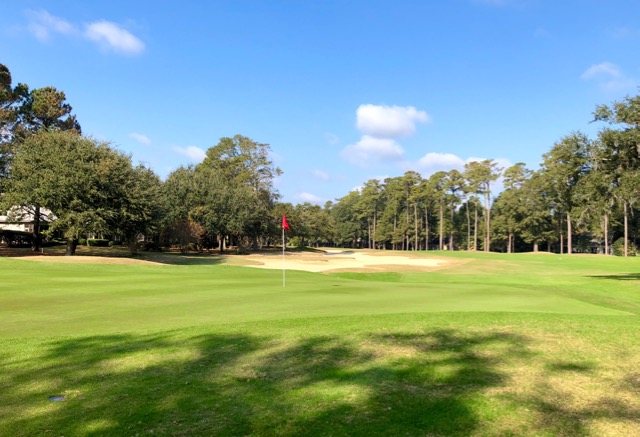Rounds of golf played last year on Myrtle Beach’s nearly 100 courses were up year to year for the first time in more than a decade. Even before the Great Recession, rounds began to drop in 2005, the result of irrational exuberance about the golf market on the South Carolina coast and the resultant overbuilding. In recent years, the number of courses on the Grand Strand, as the strip between Wilmington, NC, and Georgetown, SC, is commonly known, has dropped by about 20%. According to the Myrtle Beach Sun Times, a study conducted by Golf Tourism Solutions, a technology and marketing group hired by the local golf industry, determined that total rounds increased 4.1% year over year. The firm used about 80 of the area’s courses to compare rounds year to year. The positive golf numbers were reflected in incoming passengers through Myrtle Beach’s International Airport (a couple of flights from Canada make it “international”) and hotel and condo occupancy rates. The Jack Nicklaus designed Pawleys Plantation is one of the 30 golf courses in the Myrtle Beach area owned by Chinese firms. Pictured is the 11th green.
The Jack Nicklaus designed Pawleys Plantation is one of the 30 golf courses in the Myrtle Beach area owned by Chinese firms. Pictured is the 11th green.
The uptick in golf tourism appears to be propping up real estate sales. The Coastal Carolinas Association of Realtors has not produced end of 2017 results yet, but as of the end of November, sales volume was up 9.2% for the year, and condo sales were up 16.3%. For those seeking to build a home, or to invest in lots for appreciation, unimproved property sales were up 8.3% through November. Of greater importance to those considering Myrtle Beach for a vacation or permanent home, median sales prices in the area were up 3.9% year to date at the end of November, although November prices slid 2.4% when compared with November of 2016.
Those of us, including your author, who own property next to the 30 or so golf courses owned and managed by Chinese companies, are especially buoyed by the latest results. Ongoing reports about financial troubles back home in China have created ongoing rumors that these owners might walk away from their investments and put the future of the golf courses as golf courses in jeopardy. In golf markets that are not doing as well as Myrtle Beach, golf course owners, residents of adjacent properties and local zoning boards are battling over whether it is permissible to build homes on failing – sometimes abandoned -- golf courses. Regardless of the outcomes of these fights, real estate values suffer, certainly in the short term. Those considering a move to a golf community should look carefully at the course’s stability and ask for all relevant documents and data.
The migration of baby boomers from North to South continues apace. And the recent Federal tax changes only serve to hasten the flight. South Carolina’s overall tax burden on individuals, for example, is under $3,000 annually. Connecticut’s, for example, is just under $8,000. Overall cost of living comparisons tilt even more strongly in favor of most southern towns.



